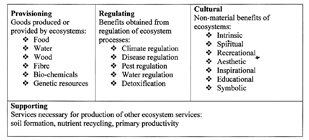Over the past year, this feature has been showcasing some of the amazing plants and animals of the Iwokrama Rain Forest; now here are some details about the importance and role of tropical forests in general and their functions.
What is a tropical rainforest?
Tropical rainforests are forests occurring in tropical areas where there is heavy rainfall and relatively even temperatures. Rainforests covers approximately 2% of the earth’s surface and are the home to over 50% of living life forms. They are the most productive and complicated of ecosystems.
Where are tropical rainforests found?
 Tropical rainforests are found around the equator where temperatures remain almost constant throughout the year, and receive an average rainfall of 2000mm per year. The largest areas of rainforest can be found in Brazil, Zaire and Indonesia. Other areas include the islands of the Caribbean and Pacific.
Tropical rainforests are found around the equator where temperatures remain almost constant throughout the year, and receive an average rainfall of 2000mm per year. The largest areas of rainforest can be found in Brazil, Zaire and Indonesia. Other areas include the islands of the Caribbean and Pacific.
What is the structure of tropical rainforests?
The rainforest structure can be broken into layers. These layers are:
Emergent: the tallest trees that reach heights of 50m tall.
Canopy: the crown of the trees seen as a sea of leaves blocking out the sun from the lower levels. Most of the rainforest’s animals live in the canopy. There is so much food available at this level that some animals never go down to the forest floor.
Under Canopy: mainly bare tree trunks and lianas
Shrub Layer: has the densest plant growth containing shrubs, ferns and saplings of emergent and canopy trees
Forest Floor: usually a dark and dank layer of rotting leaves and dead animals called litter. The top soil is very thin and of poor quality. A lot of litter falls to the ground where it is quickly broken down by decomposers like termites, earthworms and fungi. The heat and humidity further help to break down the litter. This organic matter is then just as quickly absorbed by the trees’ shallow roots.

How is the vegetation adapted for tropical climate?
Most trees have wide buttress roots to support them growing tall. The roots are spread out to help with the quick absorption of water. The trees grow tall as they have to compete for sunlight. Lianas grow around the trees in their bid to reach sunlight. The leaves of many trees are waxy and have drip tips to allow water to run off and prevent it from collecting and rotting the leaves. The leaf stems are also flexible allowing the leaves to move with the sun to maximise photosynthesis.
What are the functions of a tropical rainforest?
Tropical forests provide a myriad of functions. These include:
What are human impacts on tropical rainforest?
Deforestation or cutting of tropical forests by humans for road building, logging, cattle ranching, hydroelectric power, farming and mining is having a major impact on our global forests. Globally, forests are being degraded at a rate of 60 hectares per minute.
It is difficult to regenerate tropical rainforest because of its nutrient structuring. The soils in tropical rainforest are relatively poor in nutrient content. This is due in part to the quantity of rain that falls. 80% of the nutrients trees utilise come from decaying plant and animal materials. The nutrients released from decaying matter are quickly recycled back into the vegetation. Only 20% of these nutrients remain in the soil. When the forest is cut or degraded it changes the conditions of that forest. The soil quickly dries in the sun and the rain washes the remaining soil nutrient away. The lack of nutrients makes it difficult for the forest to fully recover.
In Guyana, we recognize this and are working towards the Low Carbon Development Strategy (LCDS) to ensure the health of Guyana’s forests for all Guyanese and the world at large.
Given the threats to tropical rainforest the Iwokrama Forest was created to develop models to show how tropical rainforest can be used in a sustainable manner giving benefits at social, environmental and economic levels to the people of Guyana and the world in general.
Rain forests are rich in biodiversity and are home to many different plants and animals as well as indigenous communities.
Humans, even those who don’t live in the rain forest, rely on it for resources such as building materials (wood and lianas), medicine and fruits.
Rain forests also provide essential environmental services for life on earth; they create soil as well as prevent soil erosion, produce oxygen through photosynthesis, maintain clean water systems, and are a key defence against climate change.
The Iwokrama Rain Forest is 371,000 hectares, located in the heart of Guyana. Our mission is to develop strategies for conservation and sustainable development for local people in Guyana and the world at large.
We are involved in timber, tourism and training. Come and visit us in the rain forest or at http://www .iwokrama.org.










